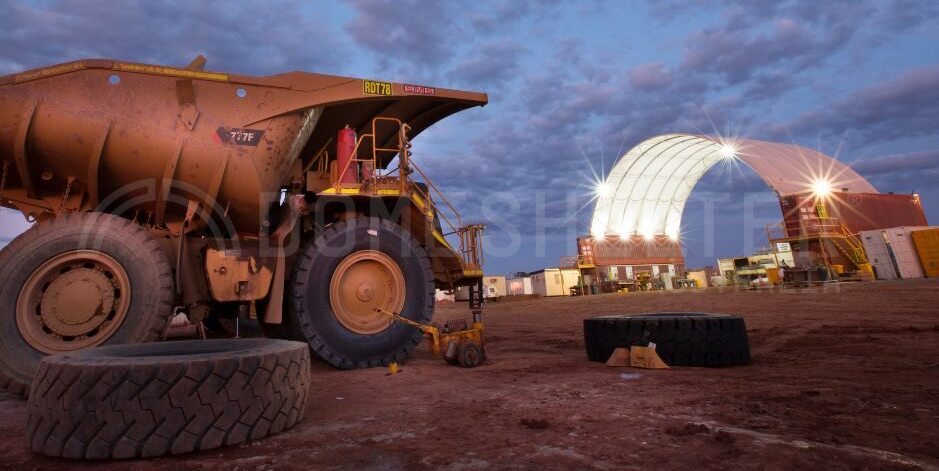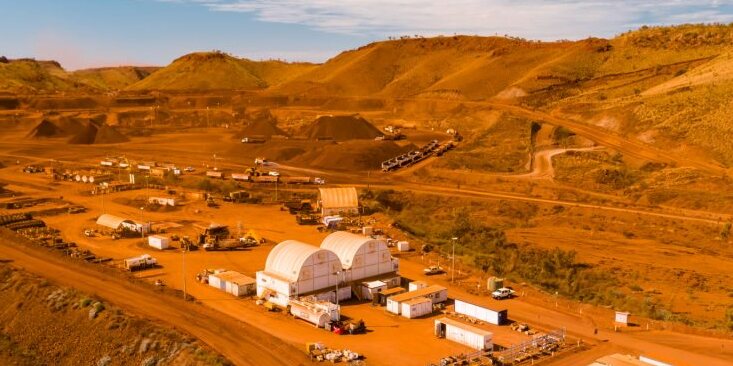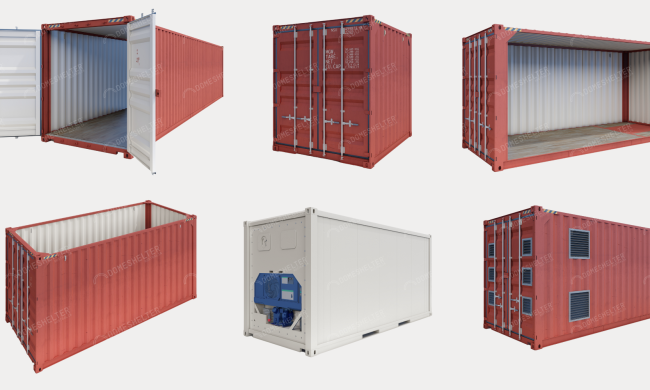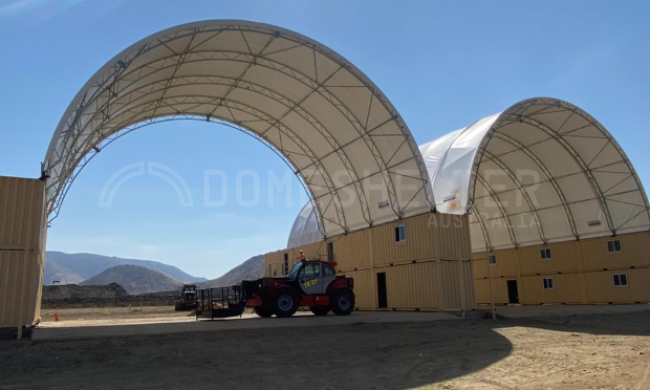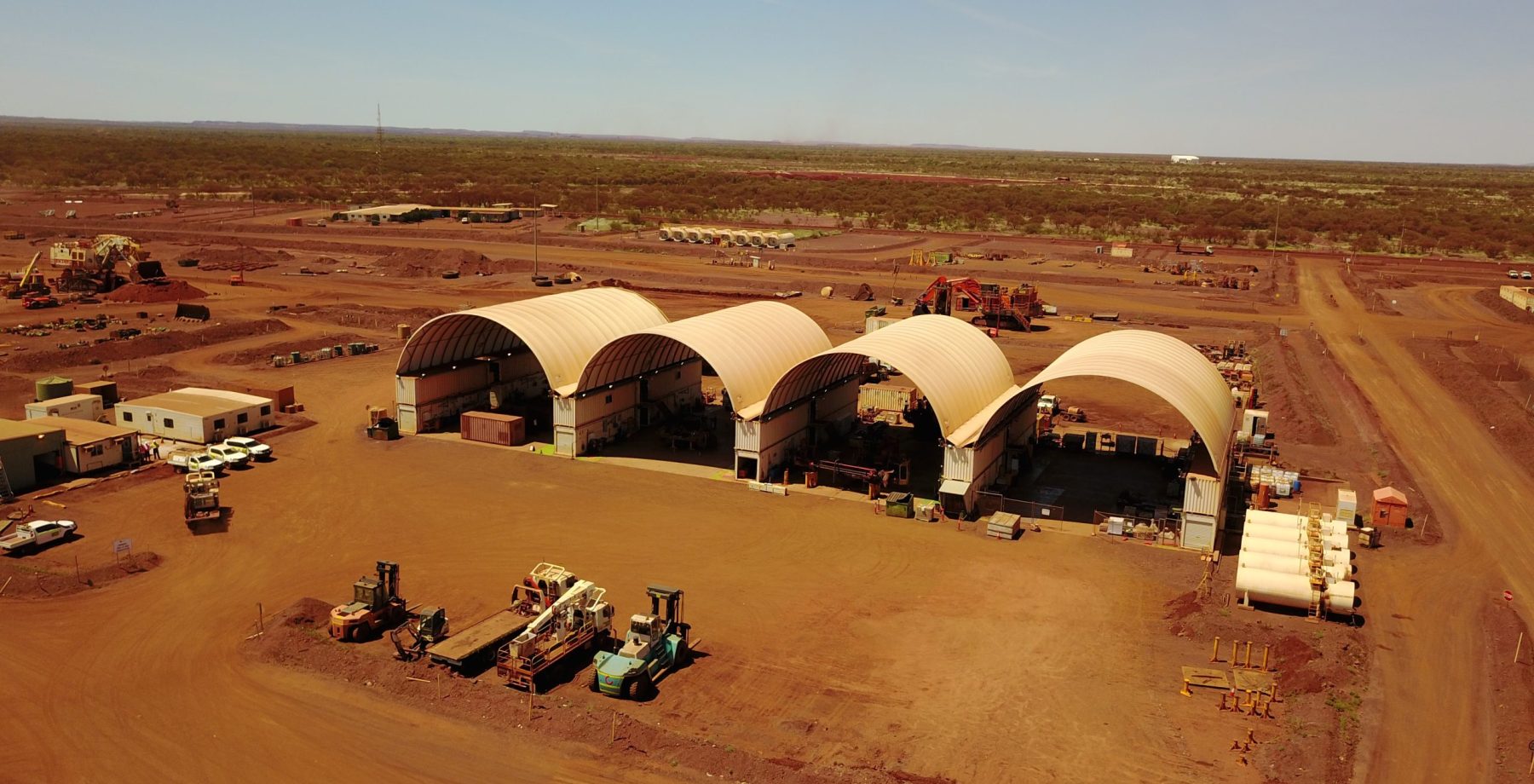
Mines are most often located in geographically and climactically challenging locations, exposed to a range of harsh weather conditions throughout the year.
Weather can create significant disturbances, interrupting productivity and costing mining companies substantially in downtime. Furthermore, climate change threatens to further intensify the frequency of harsh weather events.
Adaptations and mitigation are essential to ensure mining operations are equipped to handle whatever extreme weather events they are likely to face. Employers and supervisors have a duty to ensure staff are protected from the harm that these events could cause. This article will explore some of the challenges weather poses in the mining industry and how solutions such as investing in sheltered workspaces can help.
Extreme Weather and Mining
While mining companies generally do factor expected seasonal weather into their operations planning, extreme events can threaten to affect mining projects considerably. At the least it disrupts expected project timelines while workers wait for rough conditions to pass; at worst it can cause serious interruptions to productivity, compromises safety, destroys equipment and costs companies considerably.
Furthermore, the CSIRO warns that “as climate changes, extreme weather events are growing in frequency, and will inevitably lead to productivity, safety and environmental challenges for mines”.
Corinne Schoch, the head of programs at United Nations Global Compact Network Australia (UNGCNA), also spoke on the weather concerns posed by climate change, “while the mining industry is no stranger to operating in harsh environments, the increasingly erratic nature and intensity of these natural hazards will challenge their traditional operating models”.
Both precipitation and heat can reduce operational effectiveness or even cause operations to need to stop entirely.
Heavy Rain
While some rain is normal and expected, heavy precipitation can have severe consequences.
The risks posed include:
- Flooding, which makes mine sites inaccessible and poses safety risks
- Land transportation route disruption
- Degradation of roads
- Disruption in delivery of key materials and consumables
- Tailings dam failure
- Soil erosion and mudslides
- Damage to critical infrastructure and equipment
- Repair and remediation costs
A report by BSR found that open-pit coal mines could see up to 10% annual production losses due to frequent wet weather.
Extreme Heat
Hotter and drier weather also presents serious concerns for mine sites, environmentally and in terms of workforce safety.
- Bushfires/wildfires are increasing in frequency and severity, and could threaten mining facilities and put workers in danger.
- Water scarcity and hotter temperatures make it difficult to reestablish vegetative cover, making environmental mitigation and remediation more difficult
- Rising temperatures can increase the risk of heat-related illnesses and inhibit decision-making, increasing the likelihood of injuries, accidents and fatalities, and decreasing productivity
- Higher temperatures are likely to increase the incidence, prevalence and geographic reach of tropical diseases, which is a concern for companies operating in regions where these diseases are common
- Water stress and lack of water supply to site disrupt operations
In Germany a potash miner was forced to close two locations because of severe water shortages in the summer of 2018, losing nearly $2 million a day per site, McKinsey Sustainability reports.
The Western Australian Department of Mines, Industry Regulation and Safety has published a warning for mining companies to guard against the effects of extreme temperatures in work environments.
Deputy Director General Andrew Chaplyn labelled heat stress “a significant risk that needs to be managed across mining and exploration operations” that supervisors and workers need to understand. “Heat stroke can cause permanent damage to the brain and other vital organs, and can even result in death”.
Mitigating Weather Challenges in the Mining Industry
To ensure the resilience of mining operations in the face of extreme weather, mines must leverage historical, present, and future scenarios to comprehensively understand the consequences.
Mitigating the challenges posed by weather in the mining industry requires proactive measures to minimise disruptions and ensure the safety of operations.
-
Weather monitoring protocols can ensure early detection of weather events and quick response to potential risks.
-
Developing comprehensive emergency preparedness plans specifically tailored to weather-related risks is crucial. This includes establishing protocols for evacuation, sheltering, and response actions in the event of extreme weather events.
-
Implementing efficient drainage systems helps prevent flooding and water damage during heavy rainfall. Proper maintenance and regular inspections of drainage infrastructure are essential to ensure their effectiveness.
-
Providing comprehensive training to employees on weather-related hazards, safety protocols, and emergency procedures is crucial. This empowers workers to respond effectively to adverse weather conditions and minimize risks.
-
Providing sufficient Sheltered areas, both for staff to work within as well as for equipment and material storage, ensures they will be adequately protected from weather-related hazards, many of which relate to open-air/unsheltered work
-
Designing and constructing infrastructure with weather resilience in mind is essential. This involves partnering with suppliers who provide infrastructure solutions that comply with relevant Building Standards and are manufactured using durable materials
-
Regular monitoring of infrastructure, equipment, and safety systems is vital to identify potential weather-related risks and address them promptly. Proactive maintenance practices help ensure the reliability and resilience of mining operations.
In Summary
Addressing weather challenges in the mining industry requires a comprehensive approach that prioritises safety and resilience. By leveraging existing knowledge around the impacts of weather as well as future predictions, implementing proactive measures, and investing in sheltered workspaces, mining companies can mitigate the impacts of extreme weather events and protect their employees and operations. Embracing these strategies is vital to ensuring the sustainability and success of mining operations in the face of weather-related challenges.
Ready to enhance weather resilience in your mining operations? Contact us today to explore our range of Shelter Solutions tailored to your industry’s unique needs.




